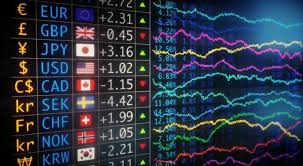
Forex trading is a dynamic and engaging field, often necessitating the use of various tools to facilitate analysis and decision-making. Among these tools, Forex trading indicators play a pivotal role. By understanding and utilizing these indicators, traders can make more informed choices and possibly enhance their profitability. For a deeper dive into trading strategies, you can visit forex trading indicators onlinetrading-cm.com, a resource for traders at all levels.
What Are Forex Trading Indicators?
Forex trading indicators are mathematical calculations based on price, volume, or open interest of a security or contract. They are used by traders to identify trends, signal buy or sell opportunities, and gauge market sentiment. These indicators are usually displayed on charts and can be utilized in various types of market analysis, including technical analysis, which relies heavily on price data and historical performance.
Types of Forex Trading Indicators
There are numerous Forex trading indicators available, each serving different purposes. The main categories include trend indicators, momentum indicators, volatility indicators, and volume indicators. Understanding each category is crucial for developing effective trading strategies.
1. Trend Indicators
Trend indicators are designed to help traders identify the direction of the market — whether it’s in an upward, downward, or sideways trend. Some of the most popular trend indicators include:
- Moving Averages (MA): This is one of the most widely used trend indicators. It smooths out price data over a specified time period to identify the direction of the trend. Moving Averages can be simple (SMA) or exponential (EMA).
- Average Directional Index (ADX): This indicator measures the strength of a trend without indicating its direction. A rising ADX indicates a strong trend, while a declining ADX suggests a weak trend.
- Parabolic SAR: This indicator helps determine potential reversal points in price movement, which can be useful for placing stop-loss orders.
2. Momentum Indicators
Momentum indicators measure the rate of change in price movements to determine the strength of a trend. Common momentum indicators include:
- Relative Strength Index (RSI): This measures the speed and change of price movements and ranges from 0 to 100. An RSI above 70 typically indicates overbought conditions, while below 30 indicates oversold conditions.
- Stochastic Oscillator: This compares a particular closing price of a security to a range of its prices over a certain period, helping traders identify potential reversal points.
3. Volatility Indicators

Volatility indicators measure the rate of price fluctuation over a specific period, providing insights into market dynamics. Key volatility indicators include:
- Bollinger Bands: These are lines plotted above and below a moving average, indicating volatility and overbought/oversold levels. When the bands expand, it usually indicates increased volatility.
- Average True Range (ATR): This indicator shows the average range between price highs and lows over a set time period, useful for determining market volatility and setting stop-loss levels.
4. Volume Indicators
Volume indicators analyze the trading volume of a currency pair, helping traders assess the strength of price movements. Popular volume indicators consist of:
- Volume: The simplest volume indicator that shows the number of trades that have occurred in a given period. High volume during an uptrend signals strength, while high volume during a downtrend can indicate weakness.
- On-Balance Volume (OBV): This uses volume flow to predict changes in stock price. The premise is that volume precedes price movements.
How to Use Forex Trading Indicators Effectively
While indicators can be powerful tools, they are most effective when used in conjunction with each other and alongside sound trading strategies. Here are some tips for using Forex trading indicators effectively:
- Combine Indicators: Relying on a single indicator can lead to misleading signals. Combining different types of indicators (e.g., a trend indicator with a momentum indicator) can provide a clearer picture.
- Consider Market Context: Always consider the broader market context. Economic news, geopolitical events, and central bank policies can significantly impact the Forex market and should be factored into trading decisions.
- Backtest Your Strategy: Before applying any trading strategy based on indicators in a live market, consider backtesting it with historical data to see how it would have performed.
- Stay Disciplined: Markets can be unpredictable, and no indicator is infallible. Stick to your trading plan, and don’t let emotions drive your decisions.
Final Thoughts
Forex trading indicators are invaluable tools that can significantly enhance your trading strategy. By understanding the different types of indicators and how to use them effectively, traders can improve their market analysis and make more informed trading decisions. Remember, while indicators can aid in decision-making, successful trading also relies on risk management, emotional discipline, and market knowledge.
As you continue to explore Forex trading, consider utilizing a wide array of resources and tools available online. Websites like onlinetrading-cm.com offer a wealth of information that can help enhance your trading acumen.



